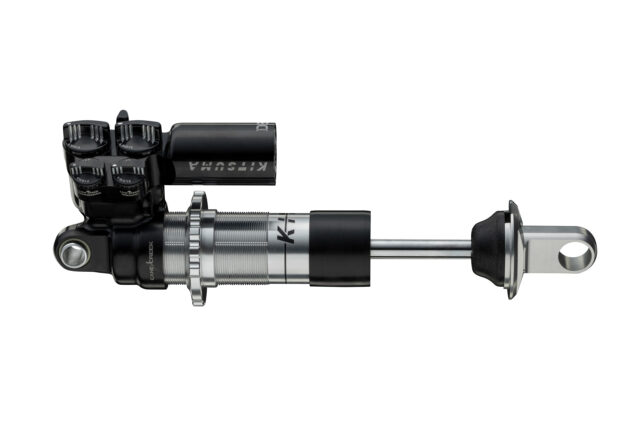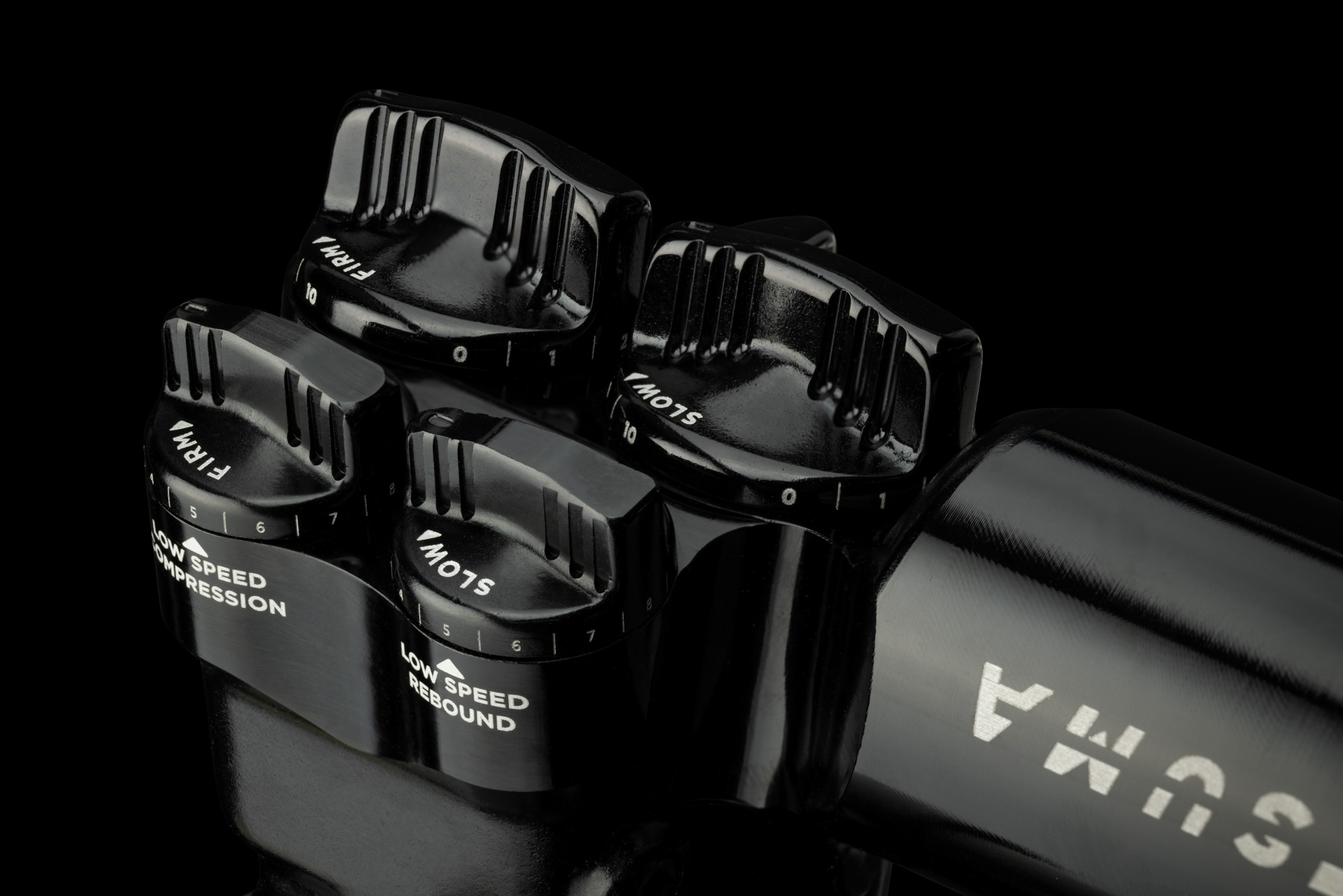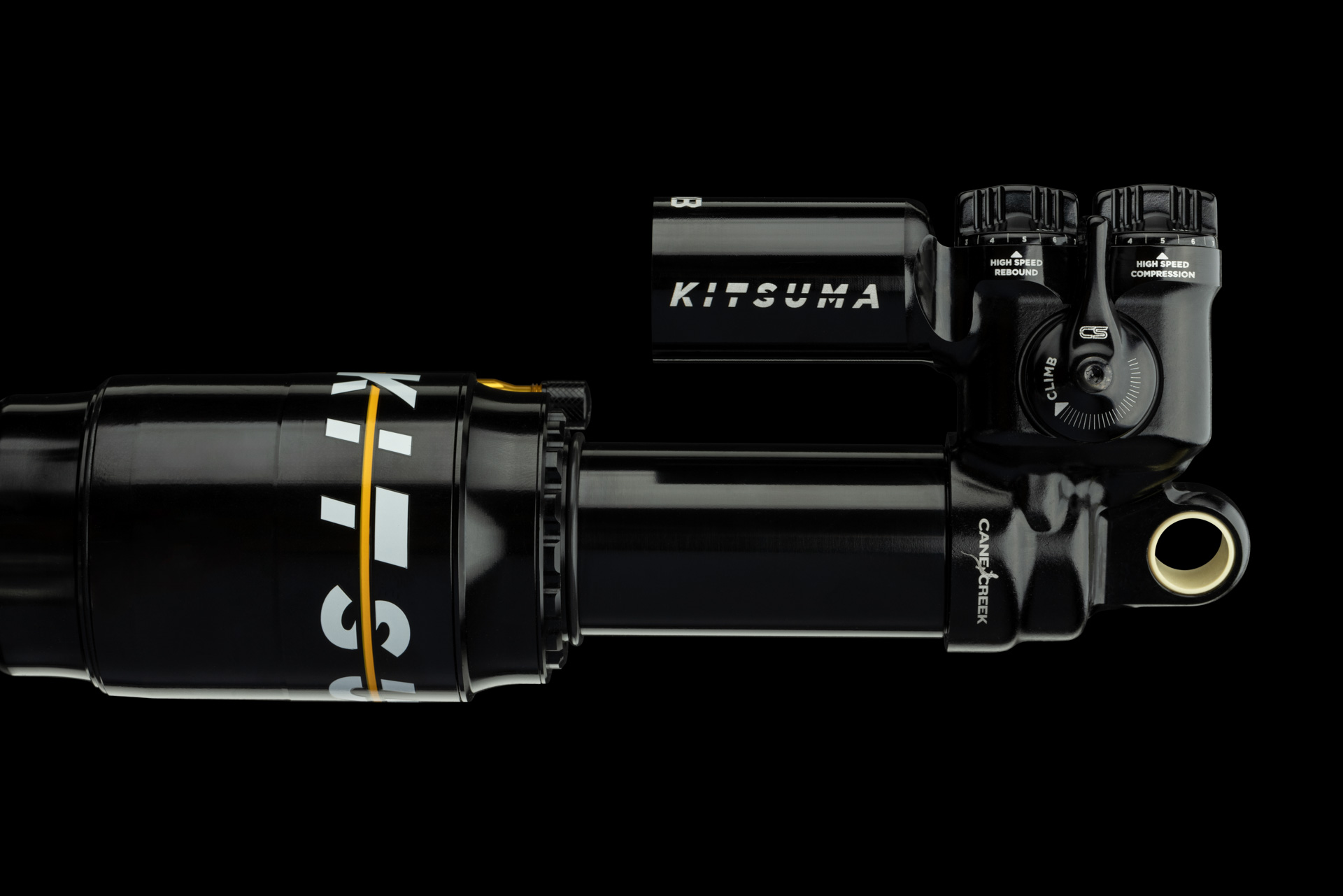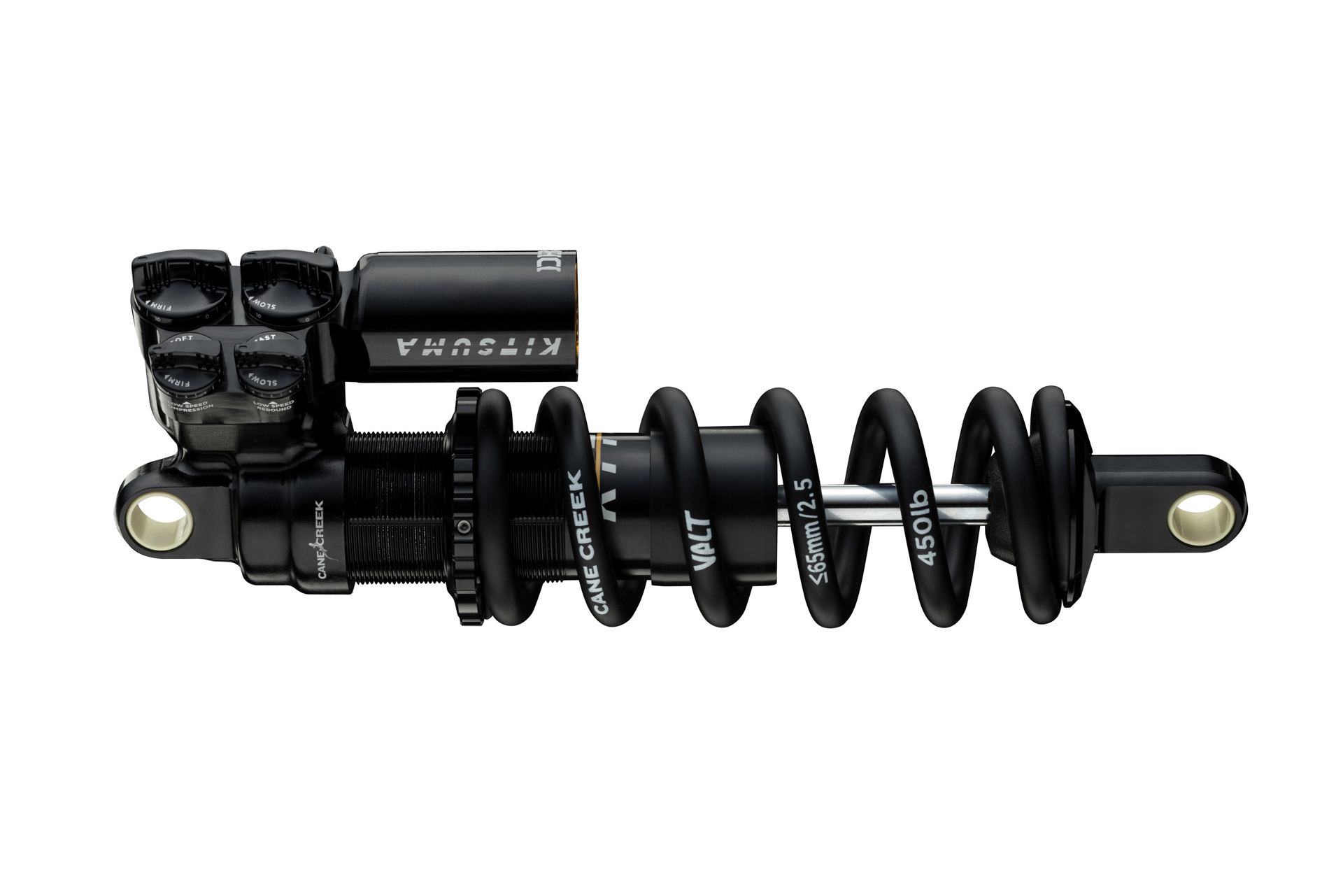Cane Creek Kitsuma V2 Shocks
MSRP:
- Kitsuma Coil: $650 (shock only, w/o spring)
- Kitsuma Air: $700
Adjustments: High- and low-speed rebound, high- and low-speed compression, three-position climb switch
Sizes Offered:
- Metric:
- 210 x 50 / 52.5 / 55 mm
- 230 x 57.5 / 60 / 62.5 / 65 mm
- 250 x 70 / 75 mm
- Metric Trunnion:
- 185 x 50 / 52.5 / 55 mm
- 205 x 57.5 / 60 / 62.5 / 65 mm
- 225 x 70 / 75 mm

Intro
The first iteration of the Cane Creek Double Barrel shock came out almost 20 years ago, built in collaboration with Öhlins. Cane Creek has given the Double Barrel a number of updates over the years, and expanded the lineup considerably, going from the coil-sprung-only first generation to offering air- and coil-sprung versions, and later adding Inline versions of both. And then Cane Creek rounded out their shock lineup with the novel “air-charged coil” Tigon — Full Review coming very soon for that one.
The first Double Barrel Kitsuma shocks followed in 2020, which brought tool-free damper adjustments and a few other refinements to the most gravity-oriented shocks in Cane Creek’s lineup. And now they’re rolling out the second-generation Kitsuma Air and Coil — so let’s see what’s new.
Design
The high-level details of the design haven’t changed much relative to the prior version. The Kitsuma shocks are still offered in air- and coil-sprung versions and use a twin-tube damper design with adjustable high- and low-speed compression, and high- and low-speed rebound. All four adjusters are still found on the reservoir bridge and are still tool-free in their operation, but the full adjustment range is now achieved with one 360° rotation of a given knob, so Cane Creek has now etched indicated settings (0 through 10) on all four so you can identify your settings at a glance.

Cane Creek says that they’ve also expanded the adjustment ranges to offer a higher maximum high-speed rebound damping setting, and lighter high-speed compression damping at the open end. They’ve also made some tweaks to some of the internals including revising the valve seats and beefing up the damper tube material for improved reliability.
Both the air- and coil-sprung versions of the Kitsuma also feature a three-position climb switch with “open,” “climb,” and “lock” modes. The climb switch firms up both the low-speed compression and low-speed rebound. Cane Creek’s take is that slowing down rebound helps keep the bike more settled at lower climbing speeds.

The Kitsuma shocks are available in eyelet and trunnion-mount versions from 210 mm (eyelet) / 185 mm (trunnion) to 250 mm / 225 mm lengths. Limited edition silver versions are also offered in a more limited range of sizes; check out Cane Creek’s website for the details.
Amidst these changes, Cane Creek has also managed to drop the price of the Kitsuma shocks by $80. The coil version retails for $650 (without a spring) and the air one goes for $700, bringing them into closer competition with more mainstream options from Fox and RockShox. They’re still built by hand at Cane Creek’s North Carolina facility.

Some Questions / Things We’re Curious About
(1) How do the new Kitsuma shocks perform, and how do they compare to the outgoing versions?
(2) How easy is it to set up the Kitsuma shocks, with their ample external adjustability, and allegedly even wider adjustment ranges?
Bottom Line (For Now)
On paper, Cane Creek’s updates to their Kitsuma shocks look like more of a light refresh than a massive overhaul, but we’ll just have to get on them to find out for sure. We’ve got a Kitsuma Air in for review, so stay tuned for more on how it performs very soon.

Is there a follow up to this?
Very interested if kitsuma is worth the money over a float X on my switchblade, and if the v2 is that much/ at all better than V1.